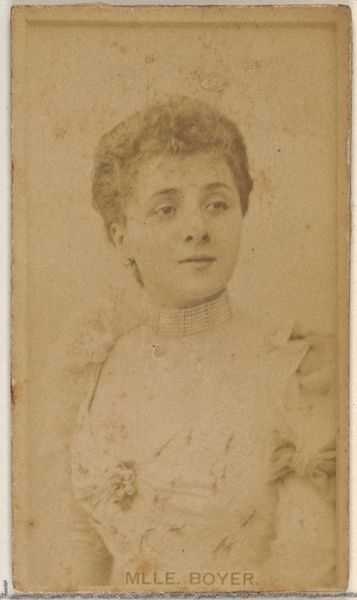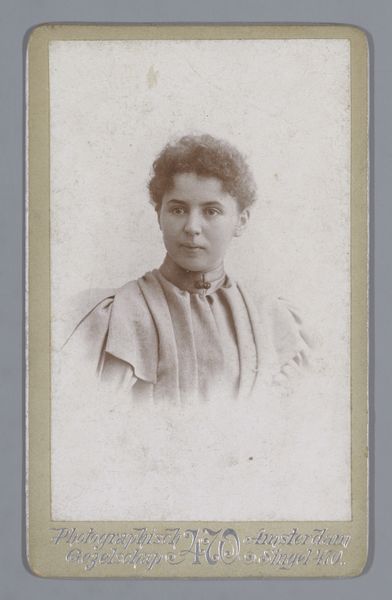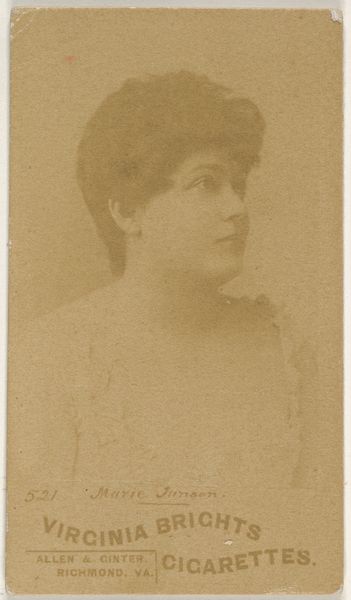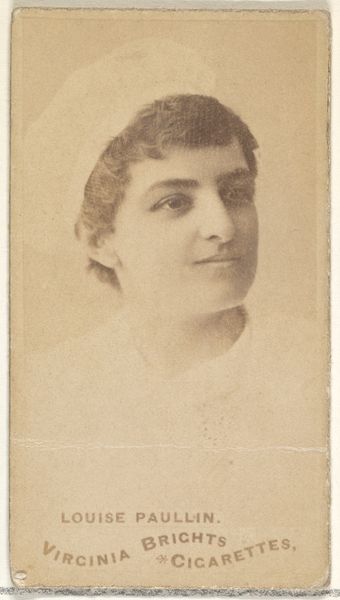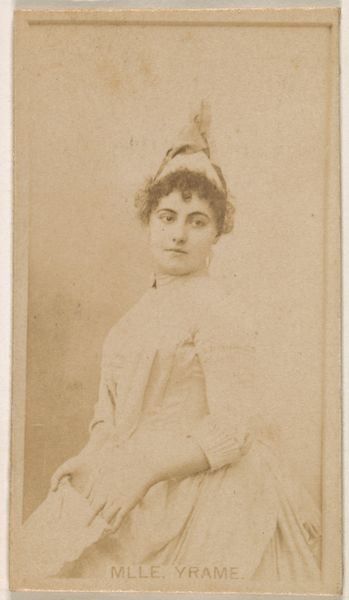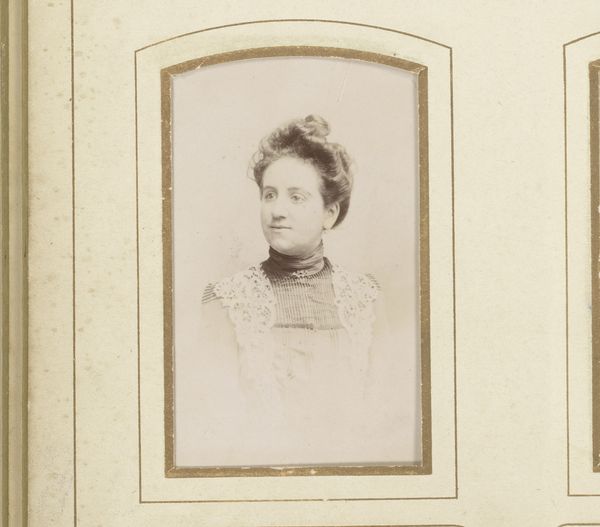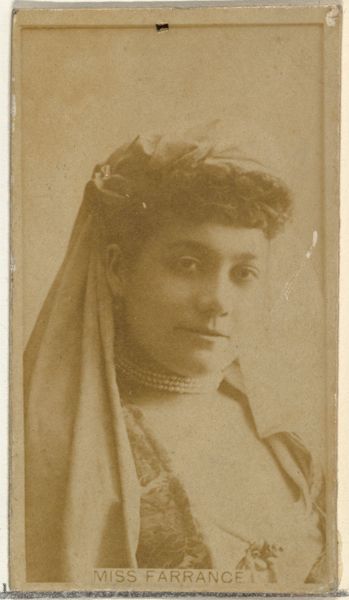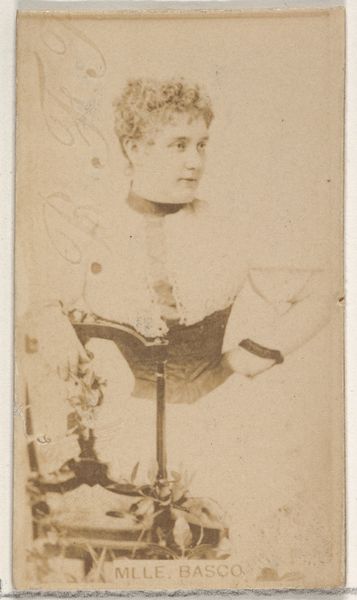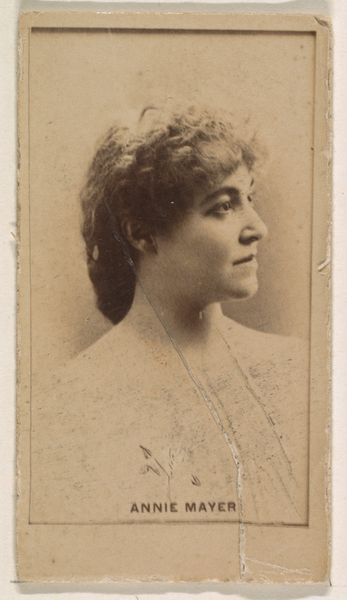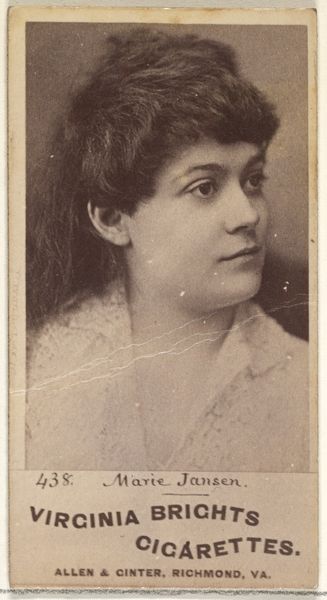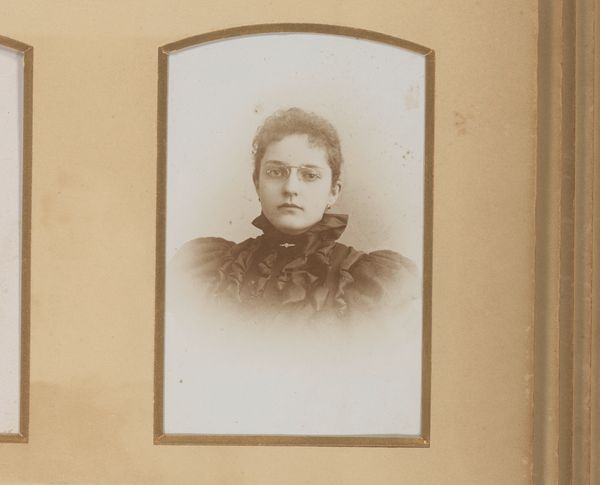
Mlle. Boyer, from the Actors and Actresses series (N145-8) issued by Duke Sons & Co. to promote Duke Cigarettes 1890 - 1895
0:00
0:00
drawing, print, photography
#
portrait
#
drawing
# print
#
photography
#
portrait reference
Dimensions: Sheet: 2 11/16 × 1 3/8 in. (6.8 × 3.5 cm)
Copyright: Public Domain
Curator: Looking at this faded photograph, titled "Mlle. Boyer, from the Actors and Actresses series," made by W. Duke, Sons & Co. between 1890 and 1895, I’m struck by the simplicity of its presentation, it looks so demure. What is your initial take? Editor: Immediately, I notice a sort of studied innocence. The gaze, the delicate lace at her neck, the almost girlish hairstyle – it's carefully constructed. This image, produced by a tobacco company, wasn’t simply a portrait, was it? Curator: Absolutely not. These photographs were produced to be included in cigarette packs. This one featuring Mlle. Boyer was part of a larger series intended to boost brand visibility and ultimately, sales. Consider it a very early form of advertising that intertwined public admiration of actresses with consumerism. Editor: Fascinating! So, Mlle. Boyer's image served a dual purpose, both showcasing her as a performer and subtly reinforcing gendered expectations through promotion linked to tobacco consumption. Curator: Precisely. And if we look more closely at the cultural context, tobacco cards frequently featured idealized female images appealing to male smokers. This created not only desire for cigarettes, but subtly communicated power and prestige by linking tobacco and access to "beautiful" women. Editor: Right, it normalizes that particular type of image as a way to sell a completely unrelated product, leveraging, shall we say, aspirational imagery and celebrity endorsements of the day. The gaze seems almost confrontational, even within the established conventions. It doesn't beg, it sort of declares, ‘I am.’ Curator: A subtle yet critical observation, I think it could be said it defies an easy stereotype. Mlle. Boyer's engagement in popular entertainment provided her a modicum of autonomy. Through these images, perhaps, she subtly negotiated how her persona was viewed by a broad public. Editor: In that sense, this is so interesting that her gaze becomes an assertion, complicating simple commodification. There's defiance in presenting as demure while simultaneously selling something potentially dangerous, wouldn't you agree? Curator: I completely agree. By putting the history of advertising and gender on the table in the analysis, we’re better prepared to appreciate how these visual elements work on so many levels. Editor: Absolutely. It offers a perspective on the history of performance and image construction and its connection to popular culture that will inform anyone in many ways.
Comments
No comments
Be the first to comment and join the conversation on the ultimate creative platform.
